Joseph interpreting the Pharoh's Dreams Lovis Corinth etching of a man in a loincloth and shackles addressing the Pharaoh and his consort
Drypoint etching created by Lovis Corinth in 1894 depicting Joseph as shackled slave in a loin cloth, standing before Pharaoh. He is gesturing as he explains: The dream of Pharaoh is one; God has revealed to Pharaoh what he is about to do. Genesis 41: 25-33. Corinth created the print for his first graphic series, Tragicomedies, plate five of nine etchings, one of only 20 that he printed. The series theme involved the use of unusual details to add a farcical element to great events, such as the almost caricatured figure of Joseph, usually depicted as handsome. Corinth was studying anatomy at the time and the figure of Joseph was probably created from a live model. Corinth (1858-1925) was a popular German painter and printmaker, known for landscapes and biblical scenes, and an early proponent of the Impressionist style. The Nazi government established a Reich Culture Chamber to conttrol all aspects of German culture. All art had a propagandistic value and its purpose was to glorify Nazi-determined German virtues. In July 1937, the Great German Art Exhibition displayed approved works. Nearby was an Exhibition of Degenerate Art that displayed the demoralizing and corrupting works of modern art. Corinth’s late works were among those featured in this exhibit and his works were removed from all German museums. No restrictions on access Lovis Corinth (1858-1925) was a prolific and popular German painter and printmaker, creating works on a variety of subjects, including portraits, still-lifes, landscapes, and allegorical and biblical subject paintings. He was born Franz Heinrich Louis Corinth on July 21, 1858, in Tapiau, East Prussia, Germany (Gvardeysk, Russia), to Franz Heinrich and Amalie Wilhelmine Opitz Corinth. His family owned a farm and tannery. From 1876-1880, he attended the Konigsberg Art Academy where he specialized in history painting and studied under Otto Gunther. He then went to Munich and joined the class of Ludwig von Lofftz at the Munich Art Academy. From 1882-83, Corinth completed his mandatory military service. From 1884-1887, he enrolled at the Academie Julian in Paris and trained with William-Adolphe Bouguereau and Tony Robert-Fleury. He returned to Germany in 1887 and adopted Lovis as his professional name. His father died on January 10, 1889, and Corinth inherited property and sizeable investments, providing him with financial stability. He moved to Munich and became a founding member of the Munich Secession in 1892 and the Free Association in 1894. Corinth was one of the major proponents of Impressionism in Germany and was part of the first exhibition of the Berlin Secession, a German Impressionism association, in May 1899. Corinth had a one-man exhibition at Paul Cassirer’s gallery in Berlin and moved permanently to that city in 1901. That year, he opened a painting school for women in his studio; he later married one of his students, Charlotte Berend. Their son, Thomas, was born on October 13, 1904, and a daughter, Wilhelmine, on June 13, 1909. By 1910, Corinth’s work was well-known in Germany, through exhibition and reproductions in local papers and art journals, as well as his writings on art. In December 1910, when Max Liebermann was forced to resign as President of the Berlin Secession, Corinth assumed the position. In December 1911, Corinth suffered a stroke. He was partially paralyzed on his left side and his painting style became more Expressionistic. The Secession was overseen by Paul Cassirer during Corinth’s illness, but in 1915, Corinth’s health improved sufficiently for him to serve as President. In 1917, the Prussian Ministry of Culture awarded him the title of Professor. During a trip to the Netherlands, Corinth fell ill with pneumonia and died on July 17, 1925, age 66, in Zandvoort. After the Nazi Party came to power in 1933, Corinth’s late works were classified as “degenerate art” and featured in the Exhibition of Degenerate Art [Entartete Kunst] held in Munich in 1937. Almost three hundred of Corinth’s works were confiscated from German museums for the exhibition; seven were highlighted in the “inadequate craftsmanship and artistry” category. In 1939, the Nazi regime sold several of his confiscated works at auction in Lucerne, Switzerland.
- EHRI
- Archief
- us-005578-irn41816
- Art
- Joseph (Son of Jacob)--Art.
- Corinth, Lovis, 1858-1925.
Bij bronnen vindt u soms teksten met termen die we tegenwoordig niet meer zouden gebruiken, omdat ze als kwetsend of uitsluitend worden ervaren.Lees meer




